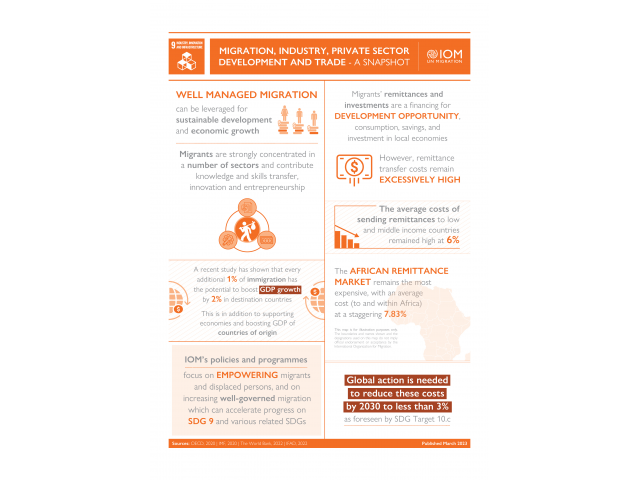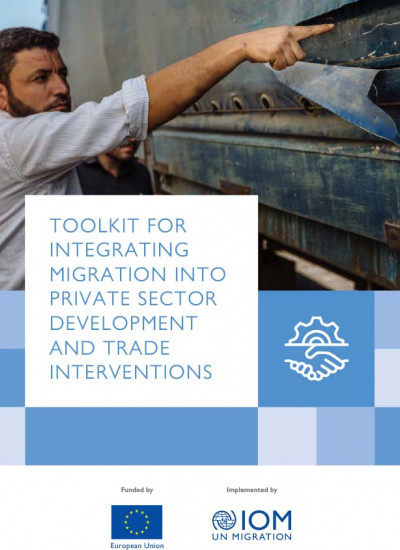Migration, industry, private sector development and trade are inextricably linked. When enabling conditions are in place, private sector development and trade are vital for inclusive and sustainable economic growth. Well-managed migration has a role in this dynamic and can be leveraged for sustainable development. Migrants can be facilitators of trade and investment in goods and services, by connecting countries of origin, transit and destination through trade routes and business linkages. This can improve and broaden market access, increasing demand, strengthening value chain linkages and lowering expenses. Migrants may also be direct providers of goods and services that are subsequently traded across borders, or they may generate demand for goods and services in countries of destination and transit, thereby encouraging trade from countries of origin.
Migrants can also be agents for private sector development at all stages of migration, from pre-departure to return. They can directly start private enterprises and/or support existing enterprises through start-up or growth financing. They also contribute knowledge and skills transfer, innovation and entrepreneurship. As the private sector is the largest employer of migrant workers, well-managed migration can also match skills to fill labour market gaps in countries of destination and respond to labour market surpluses in countries of origin.
But the links between the private sector development and trade interventions and migration don’t stop there. They are context-specific but often cross-cutting with other sectoral areas such as:
- Education: Migrants and displaced people not only need access to schools and vocational training, but their existing skills and certifications must be recognized in destination countries. This recognition, along with skills and vocational training, especially for women migrants and cross-border traders, can allow migrants to fully leverage their human capital and entrepreneurial capacity to innovate private sector enterprises and open new avenues for trade. (In line with SDGs 4, 5 and 8)
- Employment: Migrants and displaced people fill crucial private sector labour needs. Effective protection of their labour rights can allow them to fully contribute to private sector development. Migrants can facilitate trade, which in turn promotes economic growth and creates livelihood opportunities. And migrants, especially migrant entrepreneurs, can be job-creators, providing livelihood opportunities for migrants and communities. (In line with SDGs 5, 8 and 10)
- Environment and climate change: Migrant workers and migrant owned enterprises must not be overlooked in green growth opportunities. Migrants must be re-/up-skilled, building on their existing skills, experiences and innovation, to adapt to the transition to green economies. (In line with SDGs 8, 9 and 13)
- Security: Integrated border management services can promote safe migration and protect migrant rights, while also lowering barriers to cross-border and regional trade. Efficient trade across borders depends on the regular movement of persons, which in turn relies on coherent procedures and cooperation across border authorities (including customs, immigration, health, among others). (In line with SDGs 16, 17)

